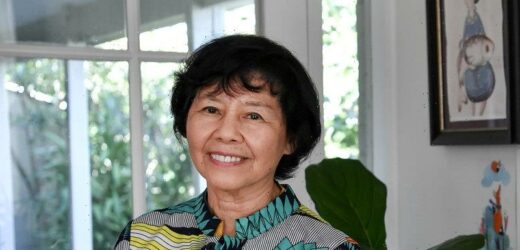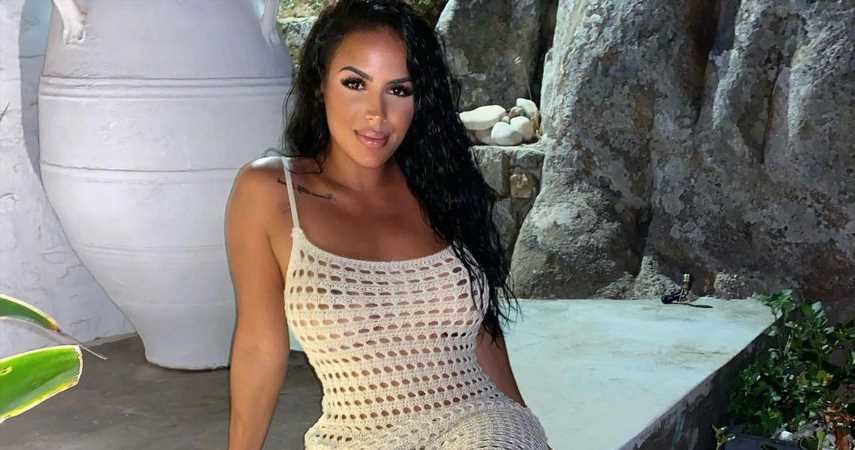Gabrielle Wang was the only Asian girl at her Melbourne school. When she used to walk around her neighbourhood, people would yell abuse at her from passing cars. But she was never proud of her Chinese heritage.
“There were no stories about a Chinese girl in a white setting,” she says today. “If there were I’m sure I would have been prouder of looking different.“
It has been Wang’s mission for more than 20 years to write in her many books for children about Chinese characters. Now that has been given fresh impetus by being named as the new Australian Children’s Laureate, a position that lasts for two years and will have giving classes, talks and generally inspiring children to read more stories.
Gabrielle Wang says by reading books that have diverse characters young people not only gain knowledge about that culture but also learn tolerance and empathy.Credit:Joe Armao
“Children need stories of hope more than ever to help them negotiate today’s difficult world and to give them coping strategies. Stories can be that powerful,” Wang says. “They can change a person on the inside, which we all know. Reading a story can help a child understand another person, know how they feel, because stories enable you to be put into the shoes of somebody else, somebody of a different culture, of a different diversity, even a different skin colour.“
The theme for her laureateship will be “Imagine a Story”. She says by reading, children can know that they belong. “I also feel that seeing me as Australian laureate means a rainbow colour, not the norm, and I hope that shows children that anything is possible.”
The irony in Wang being racially abused is that her family dates back to her great-grandfather coming to Victoria during the gold rush in the middle of the 19th century. “I’m fourth-generation Chinese Australian, so I’ve probably been here a lot longer than the people who yelled out things from cars.”
Her antecedent was from a small village and had been selected to come here by the villagers because he was intelligent and able-bodied. “They’d all put money in to send him to Australia to the gold rush, and he would be getting the riches for them and sending money back. It was like an investment.“
The family doesn’t know if he struck gold. But they know he fetched up in Wahgunyah on the Murray River, where he had a general store and also organised Chinese labourers to come out and clear land in the area for planting vineyards.
The other irony in Wang’s life is that at school she had no idea she could write. She wanted to be an artist or graphic designer. She failed year 12 English and had to repeat it. “I hadn’t written anything except angst-ridden poetry when my boyfriend dumped me.” Then she had a strange dream that proved to be a turning point.
One night she “had this incredible feeling that this train was rushing towards me. I felt I was going to discover something, a new invention. I didn’t know what it was.“
She dreamed she was a child coming downstairs from the Wangs’ home above their shop. As she walked down the narrow flight adults on either side encouraged to go out into the light. When she did she was confronted by a gigantic Chinese dragon. Chinese people describe themselves as people of the dragon and encountering one in her dream made her ready to acknowledge her heritage.
“I had this epiphany that I’m a part of this huge Chinese dragon,” she says. “I had never accepted that I was Chinese. I was born in Australia. I saw myself as being white – all my friends were white, I couldn’t speak Chinese.“
That morning she started writing a story about a girl who draws a garden on the footpath outside the shop she lives in and people walk by who have unfulfilled dreams and are sucked into the garden.
“I was so proud that I had written this short story. It was like I had found a new me. I sent it off to the Age short-story award, not knowing it was a children’s story. Of course, I didn’t get anywhere.“
Eventually, after a course at Holmesglen TAFE with children’s writer Hazel Edwards – “she became a mentor to me” – her story became her first book, The Garden of Empress Cassia, in which a girl is given magical crayons and she discovers that she can draw the empress’ garden. Since then, she has written and illustrated more than 30 books.
“Through stories we can be inside the head of someone else, someone of a different skin colour or culture. By reading books that have diverse characters and by diverse authors young people not only gain knowledge about that culture but also learn tolerance and empathy. We need that so much at this time.“
Gabrielle Wang’s new book, Zadie Ma and the Dog Who Chased the Moon, will be published by Puffin in June.
The Booklist newsletter
A weekly read for book lovers from Jason Steger. Sign up now.
Most Viewed in Culture
From our partners
Source: Read Full Article



